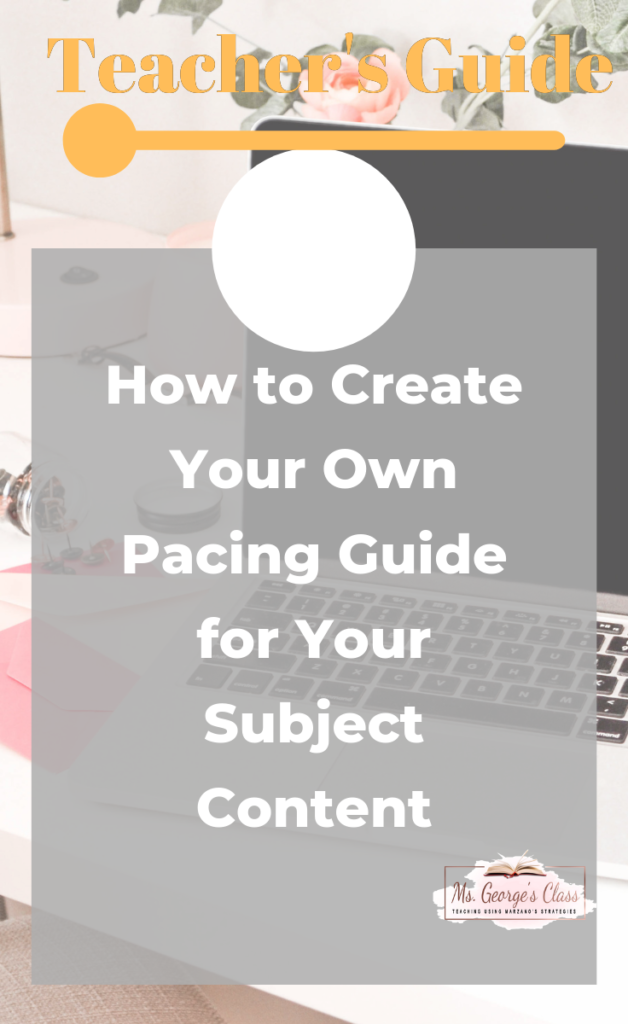
How do you create lessons that help increase standardized test scores? You start by diving in deep to deconstruct the standards for your subject and grade level. This summer, I had the pleasure of working on an English Language Arts pacing guide committee. There were six members, and we tackled the pacing guide for our district’s 7-12 grades. We worked for one week, and in the end, we had produced pacing guides that all language arts teachers could use to prepare for our district assessment and state standardized test.
Working on a Pacing Guide Committee
On an early Monday morning, six language arts teachers met at the district’s central office in a conference room. We shared a large conference room with eight to ten foreign language teachers. Each person had a laptop, and we were researching common core standards and reviewing the previous year’s pacing guide. I chose to work with the seventh grade ELA standards. I worked directly with two language arts teachers; one was from my school as the eighth grade ELA teacher, and the other teacher worked at another middle school and was looping with her seventh graders. We worked on the seventh-grade guide first and developed a system to share the workload. However, the eighth-grade teacher was able to finish the eighth-grade pacing guide by herself. Once she understood the task and finished her work, she was totally independent and was the first to finish. The high school teachers had obstacles. On Monday, one teacher became ill and was unable to finish her assigned grade. Two high school teachers were left, and they each had two grades to complete. The assignment was challenging and involved skills in designing a product that looked professional.
Designing the pacing was challenging because we had to organize standards from most important to least important, including writing and listening and speaking standards, and include learning targets. We focused on the skill of each standard. What did we want the students to show us after they completed a standard based assignment? As a team, we all agreed that writing an argumentative essay should be the final essay because it is the most challenging to defend your viewpoint. We wanted to scaffold the students’ level of rigor for each grade, starting in the first quarter. Each grade was assigned a writing standard each quarter. First-quarter students will write a narrative and the second quarter will write an informative/explanatory piece. During the third quarter, students will write an argument piece, and fourth quarter a research paper will conclude the writing standards.
Our Focus Was Informational Text
We took a hard look at the standard, reading for informational text. Our state standardized test is focusing more on informational text, and our students struggle with reading an informational text for understanding. We wrote down each standard for the reading for informational text and ranked each one in order of importance. For example, the common core standard R.I. 7.1 states, “Cite several pieces of textual evidence to support analysis of what the text says explicitly as well as inferences are drawn from the text.” As a team, we agreed this was a standard that needed to be reinforced throughout the school year, and it becomes more rigorous as it proceeds grade levels. On the 11-12 grade level, it states, “Cite strong and thorough textual evidence to support analysis of what the text says explicitly as well as inferences are drawn from the text, including determining where the text leaves matters uncertain.” The added “including determining where the text leaves matters uncertain” makes the standard more challenging. The students not only have to cite strong evidence, but they also must identify a section in the text that leaves the matter uncertain.
After we identified the standards for reading informational text, we matched the reading for literature text standards. Since the standards are very similar, we were able to put the literature standards in the order of importance. Next, we had to create learning targets (‘I can’ statements) that reflect the standards. For instance, the reading literature standard 7.1 states, “Cite several pieces of textual evidence to support analysis of what the text says explicitly as well as inferences drawn from the text.” For the learning targets, we analyzed the standard and rewrote it so that it was student-friendly. The learning targets for reading literature standard 7.1 are: I can recognize textual evidence, I can recognize inferences, I can analyze text to cite the textual evidence that is explicitly stated. The goal was to deconstruct the common core standard so it is easy to read, understand, and student-friendly.

Each group member had to identify the standard, create leaning targets from the standards, write time frames for the standard, and list vocabulary words that are to be taught weekly. We wrote a pacing guide for 27 weeks per grade. We organized our pacing guide in order of importance and scaffolded the work so that students can reach the final assignment and be successful. We included all the standards with related learning targets. When the task was completed, we felt successful. Although we were all familiar with the standards, deconstructing them allowed us to understand them better and make them kid-friendly for our students. All the work we put into the pacing guide, the team was able to create 7-12 pacing guides each teacher within the district could as a guide.
How Can You Make This Work For You?
You too can deconstruct the standards. With some time and critical thinking, you can create your own learning targets. First, become familiar with the standards of your state or common core. You can go to this website to find your standards. Place the standard in order of importance. What do you want your students to learn and understand? Think about how you teach the standards from practice to challenging and place the standards within the four quarters. Remember, you want to scaffold the standards from least to most challenging. Read the standard and analyze it in parts. Read the example I used above. Create a document that has the standards, learning targets, and the level of rigor. You can begin your school year with confidence because you organized a pacing guide for your classroom.
Designing a pacing guide for a school district can be a challenging experience. As a team, we were able to create a pacing guide that assists teachers to teach to the standards. Our focus was on what standards we want the students to learn. We took standards from grades 7-12 and described how they are alike and different and what each grade level should be able to accomplish by the end of the year. After working on the pacing guide team, I changed my way of thinking. I think about what I want the students to accomplish and feel confident in completing a standard. Since I helped create the pacing guide, I am going to use it within my classroom and focus on the learning target. Using the pacing guide should improve test scores because I am purposefully working on the skill from the standard.
Have you ever worked on a pacing guide committee? Tell me about your experience in the comment section below.




Leave a Reply